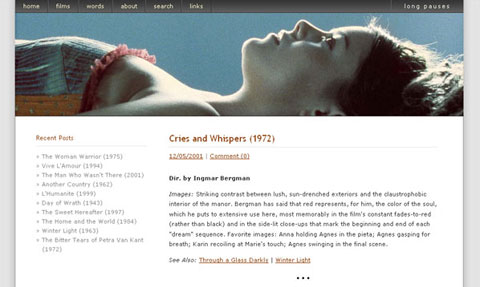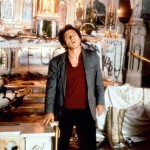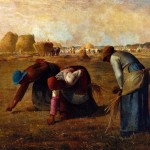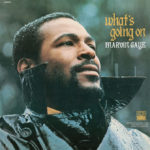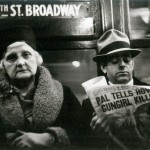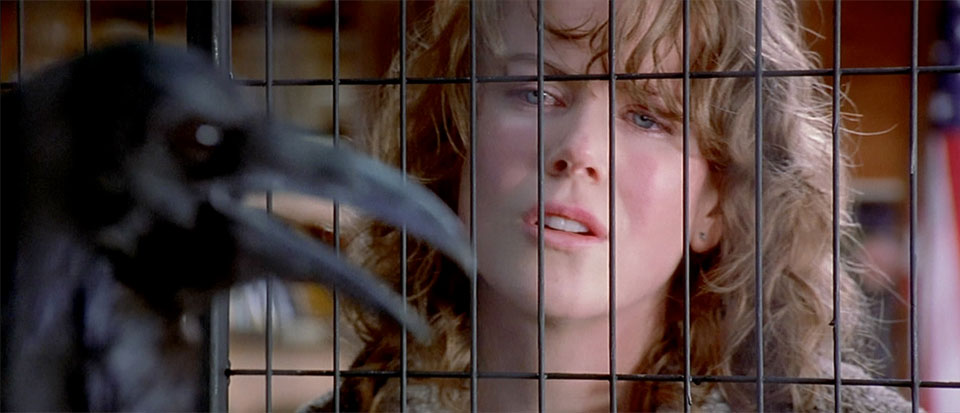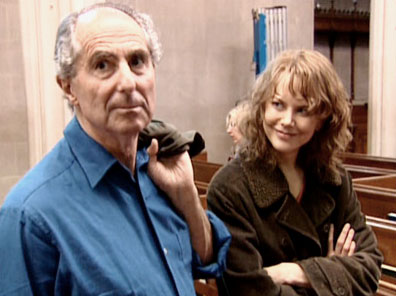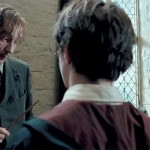Dir. by Alfonso Cuaron
I’ve seen each of the four Harry Potter films on the opening week of its release, but until this weekend I’d never read — nor, frankly, had I ever felt even the slightest desire to read — any of J. K. Rowling’s wildly popular novels. Joanna loves the books, though, and so each year we make a date of seeing the new film together. And each year I genuinely enjoy visiting Hogwarts for an hour or so. I appreciate the world-building that goes on in the films’ first two acts. Rowling is most responsible for that world, of course, but the three directors who have helmed the films, along with their well-appointed staffs of designers and artists, have done a commendable job interpreting her vision. There’s always a lot to look at in the films — more than enough, at least, to keep me entertained.
But, unfortunately, the films stretch beyond that first hour, and soon the twists and turns of Rowling’s detective plots take precedence, necessitating long stretches of mind-numbing exposition and culminating, inevitably, in evermore elaborate (and loud) action sequences. I tend to spend that last forty-five minutes waiting for the film to end and wondering how different it might have been had it been directed by a talented filmmaker allowed just enough room to interpret, rather than slavishly transcribe, the source material.
Harry Potter and the Prisoner of Azkaban, which is the third in the series and the first to not be directed by Chris Columbus, is the exception to the rule in every respect. I’ve watched it twice now in the last four days — the first time when two of our nephews were in town, the second alone with a notebook, curious to see if the film is really as good I think it is. This is what I’ve come up with so far: If I allowed myself to revise old top 10s, I’m pretty sure Azkaban would go on my best of 2004 list.
The classic discussions of auteurs center on people like Nicholas Ray, Robert Aldrich, Howard Hawks, and William Wyler, veterans of the Hollywood studio system who worked in a variety of genres and brought their own cinematic voice and mise-en-scene to pictures that, more often than not, were written and developed by someone else. I’m tempted to say that that kind of filmmaking is less common today, but the recent critical successes of Clint Eastwood, Steven Spielberg, Terrence Malick, David Cronenberg, and Ang Lee might prove otherwise. Regardless, one reason I find myself so excited by Azkaban is the notion that it is Alfonso Cuaron’s “fantasy” or “blockbuster” film in the same way that The Shining is Kubrick’s “horror” picture and Shampoo is Ashby’s “romantic comedy.” And, really, Azkaban is so much more satisfying than other recent “event” films that part of me wishes more of our contemporary auteurs would give themselves over to the experiment of making such a film. Even if just once.
I don’t know the whole story of how Cuaron came to make Azkaban. Having begun his Hollywood career with A Little Princess (1995), another fantastic children’s film, he was a perfectly logical, if risky, choice — risky because immediately before joining Team Potter he made Y Tu Mama Tambien (2001), a fantastic, um, coming-of-age/menage-a-trois/Mexican road movie. I suspect, though, that he was drawn to Rowling’s third novel, in particular, because of its relative emotional complexity. I read the book this weekend and was pleased to see that much that makes this film so much better than the other three is already there — that is, the story’s sense of tragedy stems from the characters’ conditions rather than from Rowling’s neatly-plotted mystery. (For the record, Rowling’s writing is a bit better than I’d expected. Had I been born twenty years later, my ten-year-old self would be standing in line for every midnight sale, wand in hand. As it is, I doubt I’ll read another one.)
Synopsis: In Azkaban, Harry begins his third year at Hogwarts in grave danger. Sirius Black (Gary Oldman), a murderous servant of Voldemort, has escaped from Azkaban prison intent to kill Harry, who is, as we all know by now, the only remaining threat to Voldemort’s plan to reign supreme over the Muggles (non-wizards). Or something like that. Like I said, the intricacies of the plot are never particularly interesting to me. Two new teachers are introduced as well: Remus Lupin (David Thewlis), the latest in a revolving cast of Defense Against the Dark Arts teachers, and Sybill Trelawney (Emma Thompson), who teaches Divination. We also meet the Dementors, the terrifying guards of Azkaban who come to Hogwarts in pursuit of Black, and there’s a side plot involving Hagrid (Robbie Coltrane) and a bird/horse creature called a Hippogriff.
Among the many challenges of filming a Harry Potter novel is the sheer amount of time (one full year) and action it must cover. The latest, Mike Newell’s Goblet of Fire (2005), is the least successful in this regard. It’s little more than a plodding series of episodes, none more important or emotionally resonant than another. Daniel Kasman, who has written great reviews of both Azkaban and Goblet, says of the movie: “The complaint is not that the film is alienating non-fans, but rather that the film does not even work as a film.” I was genuinely surprised at the end of the movie, for example, to see Harry heading home for the summer. The various events depicted are so disjointed, I couldn’t tell if they’d occurred over the span of a few months or a few days, and I still don’t understand why I should give a damn about that wizarding tournament in the first place. It turned the whole film into a “child in peril” story, motivated, as far as I could tell, only by the wizards’ hyper-vanity and by Rowling’s desire to expand the world of her novels beyond the English Channel. (By the way, if Daniel revisits Azkaban, I bet he’ll raise its grade into the B range.)
Having already proven his deftness with coming-of-age stories, Cuaron (along with screenwriter Steven Kloves) understands that all the sound and fury of big budget spectacle signifies little unless it’s in the service of character, and so, here, the novel’s 400+ pages are neatly trimmed to show a single but significant stage of Harry’s development. The book’s three Quidditch matches are, thankfully, reduced to a single sequence, and the film’s final rescue is cut so quickly as to make it an afterthought.
Cuaron solves the inevitable problems of pacing by foregrounding the passage of time itself. His Hogwarts is dominated by a massive clock tower with an equally massive pendulum, and his camera (a CGI animation, actually) pushes forward through the clock’s mechanical gears, making of it a metaphor and a character. Even more important, Cuaron strings together the points of the narrative with a series of inventive and, frankly, beautiful transitions. Three or four times he does his best imitation of Murnau, irising in and out from black. And in three of the film’s more memorable (and funny) moments, he tracks the change of seasons by showing the weather’s effect on another of Hogwart’s principle characters. The threats of danger, the burdens and joys of school life, and the strangeness of adolescence — all qualities essential to the telling of this story — are made more real and significant by the felt sense of time.
I also like the way Cuaron expands the borders of Hogwarts by setting it more firmly in the natural world. (Not too unlike his use of the small highway towns in Y Tu Mama Tambien, I’d argue.) It’s a lesson that extends back to at least the 19th century Gothic novels of Anne Radcliffe, whose heroes are hounded as much by the sublime landscape as by any particular ghost or demon. Cuaron and Kloves transpose many scenes originally set inside the closed walls of the castle to wooden bridges and forests. Even the walk from the school to Hagrid’s hut has been made steep, perilous, and beautifully green (in a way that only the English countryside can be beautifully green). There’s a sense in this film — and only in this film — that the wizards inhabit a world that would be surprising, joyful, frightening, and tragic even if there were no such thing as magic.
Here’s where I drop a major spoiler . . .
Finally, though, what distinguishes Azkaban from the other Potter films, and what makes it the work of an auteur, I think, is that, in spite of the big budget and special effects, it remains an essentially human drama. As in so many other archetypal fairy tales, our hero is an orphan who, through hard-fought experience, seeks to define himself in a foreign world. This is true, I guess, of all of Rowling’s novels, but in Azkaban Harry is finally allowed his first meaningful glimpse of the family life he’s been tragically denied. Black, rather than being a murderer, is in fact Harry’s loving godfather, and Lupin is also a dear friend and trusted mentor. But neither can remain with Harry at the end of the film. Lupin the Werewolf poses too grave a danger to the students; the only evidence that can prove Black’s innocence has slipped through Harry’s fingers. I don’t hesitate at all when I say that these moments are considerably more poignant in the film than in the book.
That Lupin and Black are able to elicit our sympathies is essential to the success of the film; Harry’s desire for their affection absolutely demands real motivation. Cuaron is the only director so far who has exploited the gifts of his guest stars, making of their performances an integral component of the story that really matters: Harry’s. (Seeing Thewlis, Oldman, and Alan Rickman together sure is a lot of fun, too.) David Thewlis is just so damn good as Lupin, a man whose own tragic secret has prevented him from achieving the life he desires. When, in the final forty-five minutes of Azkaban, we get to that inevitable action sequence, the battle between Lupin and Black, Werewolf versus Grim, is not so much a nail-biter as a melancholy tragedy. It is, for me at least, the first moment of genuine consequence in any of the Harry Potter films.
